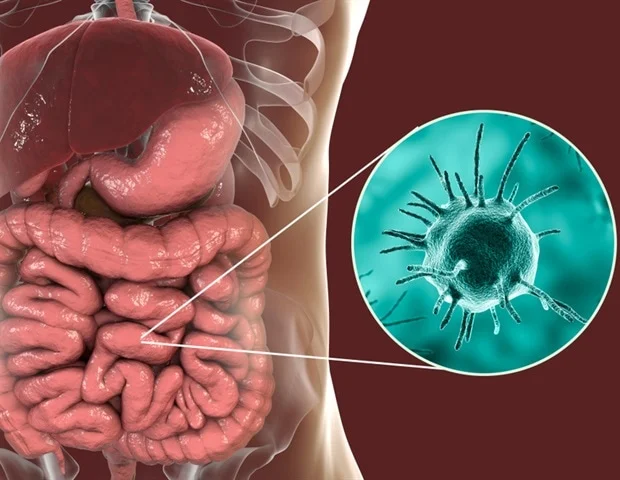Recognizing the Signs of Intestinal Amoebiasis

Intestinal amoebiasis is a parasitic infection caused primarily by Entamoeba histolytica, a microscopic organism that infects the human intestine. It remains one of the most common causes of parasitic diarrheal disease worldwide, especially in regions with poor sanitation and limited access to clean water. Early recognition of the signs and symptoms of intestinal amoebiasis is essential for timely treatment and prevention of complications.
Understanding Intestinal Amoebiasis
Amoebiasis occurs when a person ingests the cyst form of Entamoeba histolytica, typically through contaminated food or water. Once inside the body, the cysts transform into active trophozoites that invade the intestinal lining, leading to inflammation, ulceration, and infection. While some individuals may remain asymptomatic carriers, others develop acute or chronic intestinal disease, sometimes spreading to other organs such as the liver.
The infection is most common in tropical and subtropical countries, where sanitation is poor. However, due to international travel and global food trade, amoebiasis can also appear in developed nations. Pharmaceutical companies and mebendazole exporters play an important role in ensuring the availability of effective antiparasitic medications in both endemic and non-endemic regions.
Early Signs and Symptoms
The symptoms of intestinal amoebiasis vary widely, depending on the individual’s immune response and the severity of infection. Recognizing these signs early can help prevent severe complications.
1. Abdominal Pain and Cramping
The most common symptom is persistent abdominal discomfort. Pain is usually centered in the lower abdomen and can range from mild cramping to sharp, severe pain. The discomfort often intensifies before bowel movements.
2. Diarrhea
Patients frequently experience loose stools, often accompanied by mucus or blood. The diarrhea may be intermittent or continuous, depending on the stage of infection. In acute cases, stools become watery and may contain visible red streaks, indicating intestinal bleeding.
3. Dysentery
Amoebic dysentery refers to severe diarrhea with blood and mucus, accompanied by tenesmus (a painful urge to defecate). It is a clear sign of intestinal ulceration and inflammation caused by E. histolytica.
4. Fever and Malaise
While mild fever is common, some individuals develop a high-grade fever indicating a systemic inflammatory response. Fatigue, weakness, and general malaise accompany the infection due to dehydration and nutrient loss.
5. Weight Loss and Nutritional Deficiency
Chronic amoebiasis can lead to malabsorption of nutrients, resulting in progressive weight loss and weakness. The body’s inability to absorb vital vitamins and minerals also causes anemia and other nutritional deficiencies.
Chronic and Complicated Cases
If untreated, intestinal amoebiasis may evolve into a chronic or invasive form. In some cases, the parasites spread beyond the intestine, particularly to the liver, forming amoebic abscesses. Symptoms of extraintestinal amoebiasis include:
-
Persistent right upper abdominal pain
-
Enlarged liver (hepatomegaly)
-
Fever and chills
-
Jaundice in severe liver involvement
Intestinal complications such as perforation, necrosis, and peritonitis are rare but life-threatening. Therefore, accurate diagnosis and prompt treatment are vital.
Diagnosis of Intestinal Amoebiasis
Proper diagnosis involves a combination of clinical assessment and laboratory testing. Common diagnostic procedures include:
-
Microscopic Examination of Stool: Detects cysts or trophozoites of E. histolytica.
-
Antigen Detection Tests: More accurate and sensitive than microscopy.
-
Serological Tests: Identify antibodies against E. histolytica in blood samples.
-
Colonoscopy: Reveals characteristic ulcers in the colon lining.
-
PCR (Polymerase Chain Reaction): Provides precise differentiation between E. histolytica and non-pathogenic species.
Early detection allows physicians to begin antiparasitic treatment promptly, reducing the risk of complications.
Treatment and Role of Mebendazole Exporters
The mainstay of treatment for intestinal amoebiasis involves the use of antiparasitic drugs. Metronidazole and tinidazole are often the first-line therapies for killing active trophozoites. Following this, a luminal agent such as paromomycin or diloxanide furoate is used to eliminate cysts remaining in the intestine.
In some regions, mebendazole an effective broad-spectrum antiparasitic medication is also used as part of treatment or in combination with other drugs to manage intestinal infections. Mebendazole works by inhibiting glucose uptake in parasites, depleting their energy reserves and leading to their death.
The global pharmaceutical trade ensures that these essential drugs reach patients in need. The mebendazole exporters supply large quantities of the medicine to hospitals, clinics, and distributors across Asia, Africa, and Latin America. These exporters maintain international quality standards and comply with Good Manufacturing Practices (GMP) to ensure the safety and efficacy of their products.
By supporting public health initiatives and providing affordable access to antiparasitic drugs, mebendazole exporters contribute significantly to the global fight against amoebiasis and other intestinal parasites.
Preventive Measures
While medication plays a crucial role in treatment, prevention remains the most effective way to combat intestinal amoebiasis. Key preventive steps include:
-
Ensuring Safe Drinking Water: Boil or filter water before consumption, especially in endemic regions.
-
Maintaining Good Hygiene: Wash hands thoroughly after using the toilet and before eating.
-
Eating Hygienic Food: Avoid raw vegetables, salads, and street food in high-risk areas.
-
Proper Waste Disposal: Improve sanitation systems to prevent fecal contamination of water supplies.
-
Health Education: Community awareness programs can help reduce transmission rates.
Public health organizations, along with mebendazole exporters, often collaborate to distribute educational materials and affordable antiparasitic treatments in endemic zones.
The Global Burden and Need for Awareness
According to the World Health Organization, amoebiasis affects up to 50 million people globally each year, leading to around 100,000 deaths. Most cases occur in developing countries, but international travel, migration, and inadequate sanitation have made the disease a concern even in urban environments.
Increasing awareness among healthcare providers and the general public is crucial. Recognizing the symptoms early and seeking timely medical attention can prevent severe complications. Governments and private sectors, including mebendazole exporters, play vital roles in improving access to diagnosis, treatment, and prevention programs.
Conclusion
Intestinal amoebiasis remains a major public health concern, especially in low-income regions where sanitation and clean water access are limited. Early recognition of symptoms such as abdominal pain, diarrhea, and dysentery can lead to prompt treatment and reduced morbidity.
The availability of antiparasitic drugs is critical for controlling this disease. Mebendazole exporters are key contributors to global health supply chains, ensuring that safe, effective, and affordable medications reach patients across the world.
Through continued collaboration between healthcare providers, pharmaceutical manufacturers, and exporters, it is possible to reduce the global burden of intestinal amoebiasis and improve the quality of life for millions.

